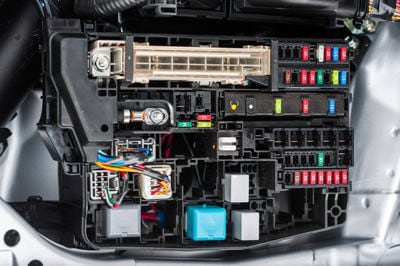Improve processes with professional mechanical system optimisation support.
Improve processes with professional mechanical system optimisation support.
Blog Article
Leading Tips for Effective Electric System Troubleshooting
Troubleshooting electrical systems calls for a methodical approach, grounded in a comprehensive understanding of electric principles and security protocols. The subtleties of efficient troubleshooting prolong beyond plain technological expertise; comprehending exactly how to record findings and prioritize safety can considerably affect outcomes.
Understand the Essentials
Understanding the basics of electric systems is necessary for effective troubleshooting, as a solid foundation permits professionals to identify and fix issues extra effectively. An extensive grasp of electrical principles, such as voltage, existing, resistance, and power, is vital in recognizing the origin of issues. Voltage is the electrical possible difference that drives existing with a circuit, while resistance opposes the flow of existing, influencing the overall functionality of the system.
Familiarity with circuit parts, including resistors, capacitors, diodes, and switches, is likewise vital. Each part plays a distinct role in circuit behavior and can affect performance when malfunctioning. Additionally, recognizing series and parallel circuit setups is crucial, as these plans affect the circulation of voltage and existing within the system.
Professionals have to be conscious of potential risks, such as shock and brief circuits, to implement safe troubleshooting techniques. By grasping these fundamental concepts, service technicians enhance their ability to carry out efficient diagnostics and repairs, eventually leading to boosted performance and dependability of electrical systems (electrical system troubleshooting).
Gather Necessary Equipment
Efficient troubleshooting of electric systems needs the ideal set of tools to identify and resolve issues accurately. A well-appointed service technician can substantially improve effectiveness and efficiency in recognizing problems. Necessary tools include a multimeter, which determines voltage, existing, and resistance, enabling exact examinations of electric parts. Secure meters are likewise important for measuring present without detaching the circuit, making sure safety and security and benefit.
Furthermore, insulated hand tools such as screwdrivers, pliers, and cord strippers are vital for securely manipulating electrical connections. It is also a good idea to have a circuit tester accessible to verify the visibility of voltage in outlets and cables. For more complex systems, a thermal imaging cam can assist find overheating components, showing prospective failings.

Adhere To a Methodical Technique
Having official statement collected the suitable tools, the following action in troubleshooting electrical systems is to follow an organized method. A systematic strategy makes sure that specialists can determine faults successfully and properly, minimizing downtime and avoiding unnecessary fixings.
Begin by more information assessing the system's schematic layouts and specifications. This includes monitoring each part methodically, starting from the power resource and working towards the load.
Use screening equipment, such as multimeters and oscilloscopes, to gather unbiased information regarding voltage, existing, and resistance at numerous points within the system. This empirical proof will certainly guide your troubleshooting efforts and assist to verify or eliminate possible sources of failing.
Furthermore, think about ecological aspects that might affect the system's performance, such as temperature changes or dampness ingress. A detailed evaluation of electrical wiring, connections, and parts will guarantee that all possibilities are accounted for.
Paper Your Searchings For
Extensive documentation is crucial in the fixing procedure of electric systems. Precise records improve the performance of determining reoccuring issues and promote communication among employee. Each finding must be meticulously kept in mind, consisting of signs observed, tests carried out, and the outcomes of those examinations. electrical system troubleshooting. This practice not just aids in comprehending the origin of the issue however likewise acts as a reference for future troubleshooting initiatives.

Furthermore, maintaining a log of components replaced or repair services carried out is vital. This details supports supply management and can assist examine the longevity and integrity of details components.
Inevitably, the paperwork procedure ought to be extensive yet concise, enabling easy retrieval and evaluation - electrical system troubleshooting. By focusing on in-depth paperwork, technicians can produce a useful knowledge base that not only aids in current troubleshooting however Recommended Reading likewise encourages future upkeep initiatives, thus enhancing general system dependability

Prioritize Precaution
Acknowledging the fundamental risks connected with electric systems is vital for making sure security throughout troubleshooting. Electric shock, burns, and equipment damages are simply a few of the potential hazards that professionals face. Prioritizing precaution is not only a lawful obligation however also an ethical critical that safeguards both the service technician and the surrounding atmosphere.
Before starting any type of troubleshooting task, technicians should put on ideal personal safety tools (PPE), consisting of shielded gloves, security glasses, and flame-resistant clothes. Guaranteeing that the workplace is completely dry and devoid of mess can dramatically decrease the threat of accidents. Additionally, it is vital to de-energize circuits before starting any kind of work, verifying that they are not endure using a multimeter or voltage tester.
Establishing clear interaction protocols with staff member is also important; this makes sure that everyone knows possible hazards and the condition of the electrical system being worked with. Lastly, having an emergency situation reaction strategy in position can prove indispensable in the event of an incident. By focusing on safety and security measures, professionals can successfully mitigate dangers and promote a more secure workplace.
Verdict
Effective electrical system repairing depends on a thorough understanding of basic concepts and a methodical strategy. Focusing on safety and security actions ensures the well-being of people involved and the stability of the electric system.
Report this page